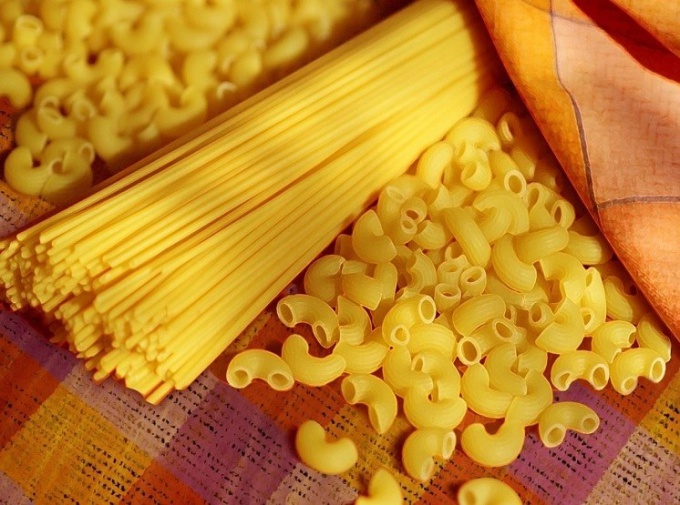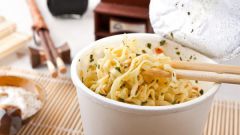Composition of pasta
Pasta and pasta, which you can buy in Russian stores, regardless of the country in which they were produced, are divided into three classes. Class a is made only of durum wheat, called durum. For the manufacture of macaroni, class In is used the average of the hardness of wheat, and for p – soft varieties. In addition to flour from wheat corresponding hardness, the pasta dough can be added flavoring agents, preservatives, colorants (natural and synthetic), as well as eggs and their derivatives, whey and milk, whole or dry.
Regarding the product such as spaghetti, their composition is nothing but water and flour, by definition, should not be. Can only use pulp from organic vegetables (carrots, pumpkins, tomatoes) for staining of the test in other colors. Spaghetti is also divided into two classes. Part spaghetti 1st grade need to sign high quality flour of hard varieties, for products of the 2nd class using flour of first grade. The most useful are the pasta and spaghetti, which only durum wheat and water, in the case of natural vegetable juice.
Pasta and flour varieties "durum" - must necessarily enter into the diet of someone who wants to eat healthy. They are useful even for diabetics.
Useful properties of pasta
Pasta of the highest grade, consisting of high-quality wheat and water is a highly concentrated source of fiber, complex carbohydrates, many minerals and vitamins. Especially great is the amount of vitamin B1. The complex of useful substances contained in pasta, helps lower "bad" cholesterol in the blood by stimulating the process of losing weight and reducing the risk of coronary heart disease. These macaroons are a necessary component of many diets, both therapeutic and those that are designed to reduce and stabilize weight.
Energy value of 100 grams of pasta – 350 calories, they contain 12-14 grams of protein, 1.1 to 2 grams of fat, 70 grams of carbohydrates.
Spaghetti and pasta of the highest class contain useful carbohydrates are "slow" sugars, which are fully absorbed by the body without turning into fat cells and not putting off in the form of fat reserves. They fully meet the need in the glycogen necessary for muscle and liver. In addition, pasta contains the amino acid tryptophan, which is involved in the synthesis of serotonin - the good mood stimulator.


